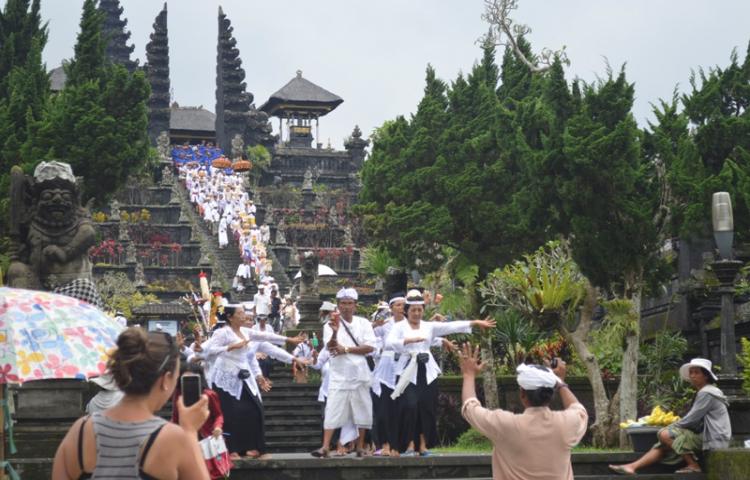Pura Agung Besakih is located in Besakih Village, Rendang District, on the southwest slope of Mount Agung, which is the highest mountain in Bali. Access from Denpasar City to reach this place is about 25 km to the north from Semarapura City – Klungkung Regency.
The journey to Besakih Temple passes through the panoramic view of Bukit Jambul which is also one of the tourist objects and attractions of Karangasem Regency.
The location of Besakih Temple was deliberately chosen in a village that is considered holy because of its high location, called Hulundang Basukih which later became Besakih Village. The name Besakih is taken from Sanskrit, wasuki or in Old Javanese basuki which means safe. Apart from that, the name Besakih Temple is also based on the mythology of the Basuki Dragon as a balance to Mount Mandara.
The many relics of the megalithic era, such as menhirs, stone thrones, pyramid terrace structures found in the Besakih Temple complex, show that as a sacred place, it seems that Besakih originates from a very old era, long before the influence of Hinduism.
The Besakih Temple complex was built based on natural balance in the Tri Hita Karana concept, where the arrangement is adjusted based on the cardinal directions so that the building structure can represent nature as a symbol of this balance. Each of the cardinal directions is called a mandala with a ruling deity called “Dewa Catur Lokapala” where the middle mandala is the axis, so that the five mandalas are manifested as “Panca Dewata”.
The description of the structure of the Besakih Temple building based on the concept of cardinal directions is:
- Penataran Agung Besakih Temple is the center of the mandala in the Middle direction and is the largest temple of the existing group of temples, which is intended to worship the God Çiwa;
- Pura Gelap in the East to worship God Içwara;
- Pura Kiduling Kereteg in the south to worship the god Brahma;
- Ulun Kulkul Temple in the west to worship God Mahadewa;
- Batumadeg Temple in the north to worship Lord Vishnu.
Source: http://v2.karangasemkab.go.id/index.php/baca-pariwisata/118/Pura-Agung-Besakih

